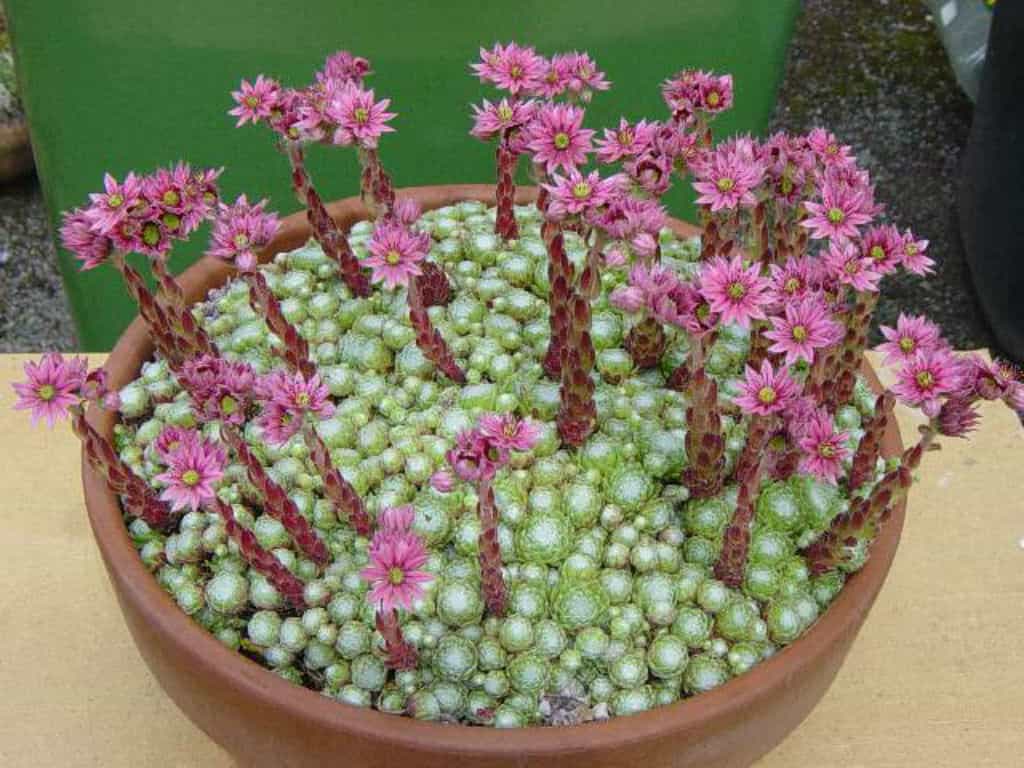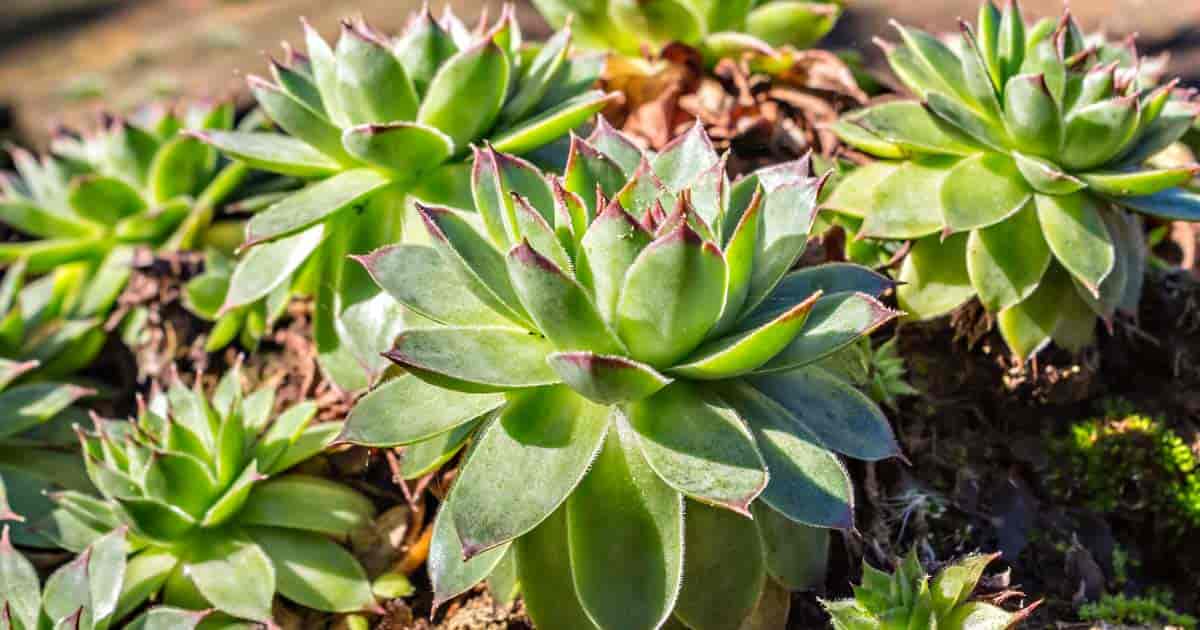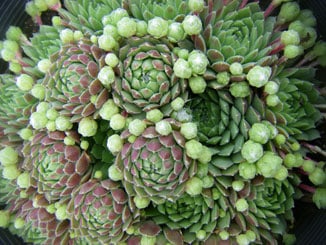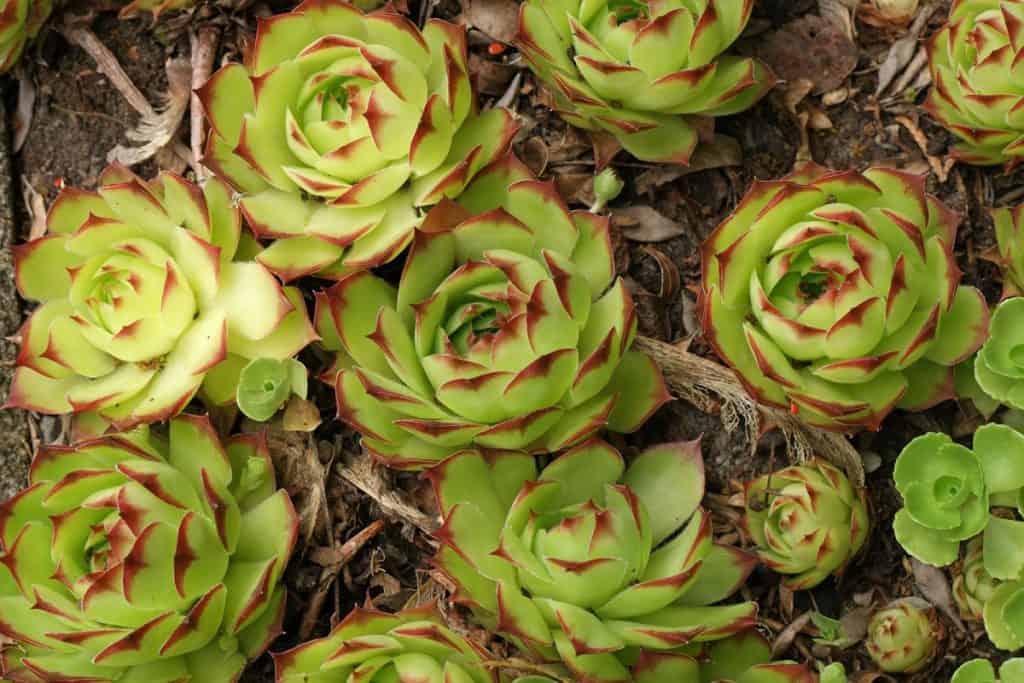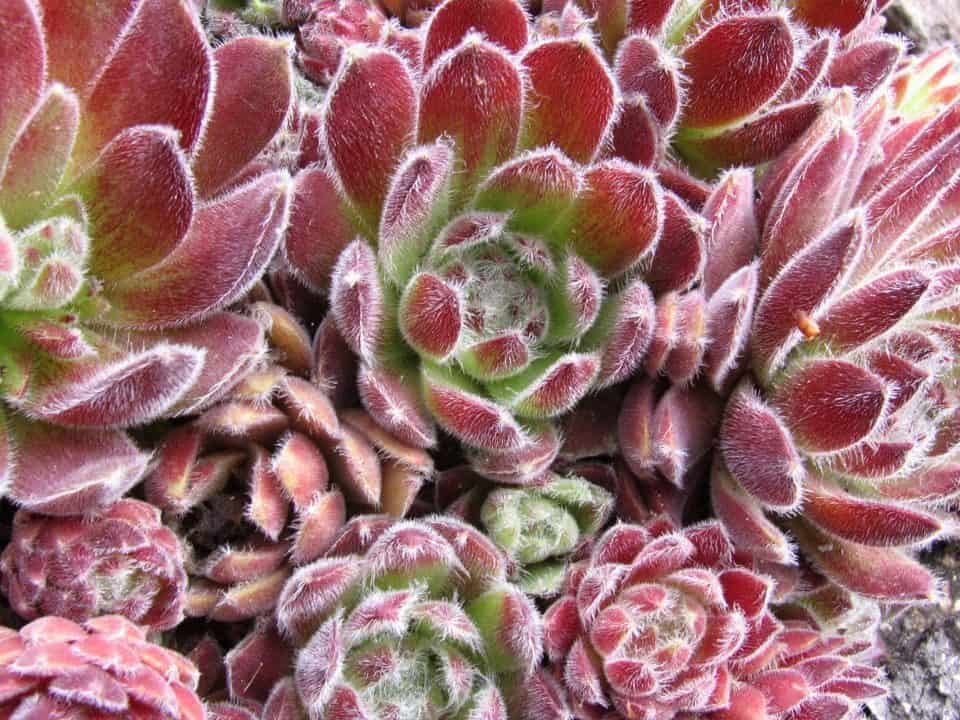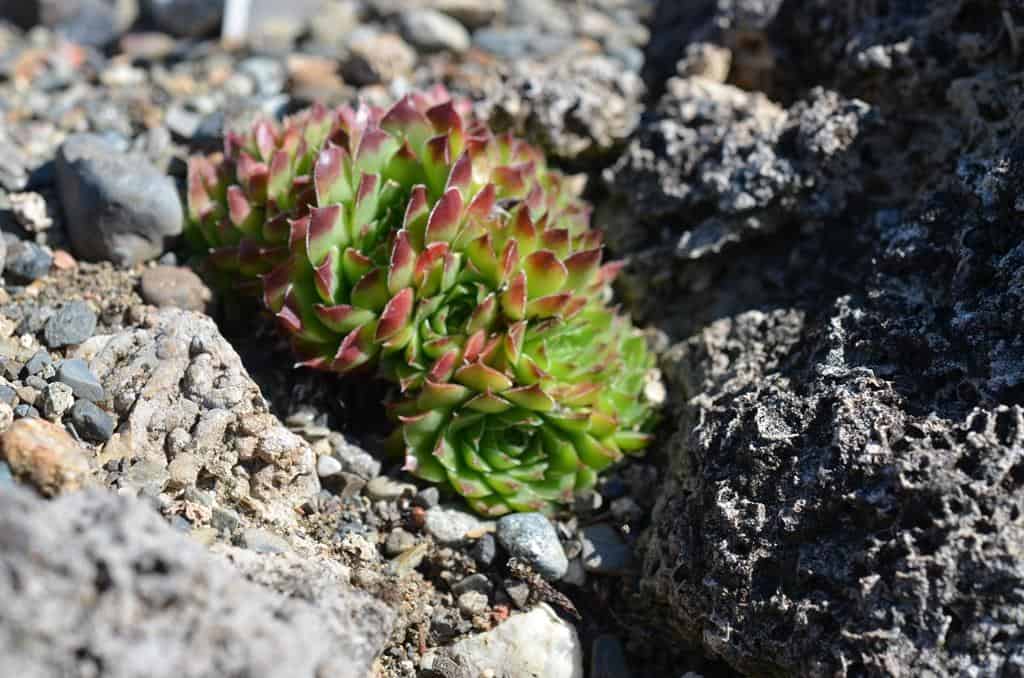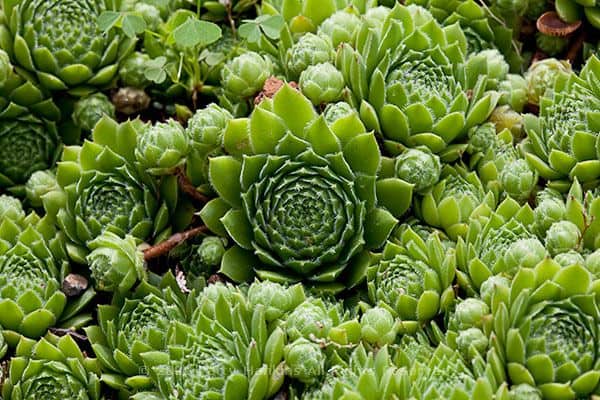Sempervivum arachnoideum, also known as the cobweb succulent, cobweb hen and chick, cobweb houseleek, cobweb plant, or just cobweb sempervivum, is a gorgeous succulent plant that’s widely known in the succulent world as one of the most beautiful houseplants you can grow. It has dark, waxy-looking leaves with interesting white veins on them, which gives this succulent an ethereal look and feel.
The Cobweb Hen and Chick Sempervivum Arachnoideum are part of the hen and chicks (sempervivum) family and were named by the famous English botanist, Sir J. E. Smith in 1788.
It was Smith who also named the most common variety of sempervivum, henningsianum, in honor of his friend John Hennings of Edinburgh Botanic Garden in Scotland.
Origin and distribution
Sempervivum arachnoideum is a perennial succulent that is native to the mountainous regions of central and southern Europe. It is also known as the cobweb sempervivum or cobweb houseleek. The plant typically grows in rosettes and produces small, white flowers.
The leaves are covered in fine, white hair that gives the plant a cobweb-like appearance. As a result, it is often called cobweb sempervivum or cobweb houseleek. It was first described by Linnaeus in 1753 and has since been grown extensively throughout Europe.
In the last hundred years, it has also been cultivated on many other continents including North America, South Africa, Australia, New Zealand, and Japan.
It can be grown outside as an ornamental garden plant but requires full sun and soil with good drainage. Pruning should only be done in spring when new growth appears and if any dead foliage remains.
If left unchecked, this sempervivum will quickly spread into a large colony. Plants can reach heights of 2 feet tall with individual rosettes ranging from 4 to 12 inches wide.
Sempervivum arachnoideum propagation
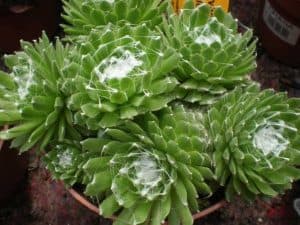
Sempervivum arachnoideum can be propagated by seed, offsets, or leaf cuttings. To propagate by seed, sow the seeds in a well-drained soil mix and keep them moist. Offsets can be removed from the mother plant and replanted. To propagate by leaf cuttings, take a leaf from the mother plant and insert it into a well-drained soil mix. Keep the soil moist and the cutting in bright indirect light.
A mature offset will often root within one to two weeks. Leaf cuttings will also grow roots when inserted into the soil but may take longer to do so. An easy way to identify sempervivum arachnoideum is by looking for the cobweb-like appearance of these succulents’ leaves. It should have clusters of rosettes on top with small reddish flowers.
The flowers will only last a few days before they die off and turn brown which is why you should watch out for new growths coming up soon after flowering has finished.
Sempervivum arachnoideum care information
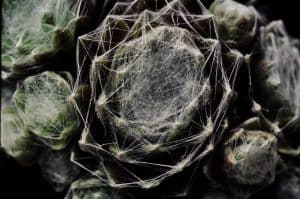
The Sempervivum arachnoideum, or Cobweb Hen and Chick, is a perennial succulent that is native to Europe. It is a low-growing plant that forms rosettes of fleshy, green leaves. The leaves are covered in white cobweb-like hairs, which give the plant its common name. The Sempervivum arachnoideum is easy to care for and makes an excellent addition to any succulent collection.
Light requirement
The Sempervivum arachnoideum, or Cobweb Hen and Chick, is a succulent that does best in full sun. However, it can also tolerate partial shade, especially in hot summer climates. It’s important to give this plant plenty of light so that it can maintain its vibrant coloration. If it doesn’t get enough light, the leaves will start to stretch and the plant will become leggy.
Soil/potting mix
Sempervivum arachnoideum, or cobweb hen and chick, is a succulent that does best in well-draining soil or potting mix. The plant’s roots are very sensitive to overwatering, so it’s important to make sure the mix is on the drier side. A good rule of thumb is to water only when the top inch of soil is dry. Sempervivum arachnoideum also prefers bright, indirect light but can tolerate some direct sun.
Watering
Sempervivum arachnoideum is drought tolerant and can be left to dry out for extended periods of time. They will start to shrivel and the leaves will begin to wrinkle when they need water. Water deeply and allow the soil to dry out completely before watering again. They are sensitive to overwatering and can rot easily if left in soggy conditions.
Fertilizer
This plant doesn’t require much fertilizer. In fact, too much fertilizer will cause the leaves to turn yellow and may even kill the plant. A light feeding of a balanced fertilizer every few weeks is all that’s needed. If you do fertilize, be sure to use a water-soluble fertilizer and apply it to the soil, not the leaves.
Temperature
Sempervivum arachnoideum is a succulent that can tolerate cold temperatures down to USDA hardiness zone 5a (-28.9 °C or -20 °F). It prefers full sun to partial shade and well-drained soil. This plant is drought-tolerant and does not require much water once established. Sempervivum arachnoideum is an evergreen succulent that produces offsets or chicks around the mother plant.
Humidity
Sempervivum arachnoideum, or cobweb hen and chick, is a succulent that prefers high humidity. If the air is too dry, the leaves will start to shrivel and the plant will become stressed.
To increase the humidity around your plant, you can mist it with water or set it on a pebble tray filled with water. You should also make sure that your plant is in a well-ventilated room to prevent the leaves from rotting.
The ideal humidity range is 60% to 70%. For those who live in areas with less than 60% humidity, you may want to consider using humidifiers or planting them outside during the summer months.
Pruning
Sempervivum arachnoideum, or cobweb hen and chick, is a low-growing succulent that produces rosettes of thick, fleshy leaves. The leaves are green with red tips and are covered in a fine layer of white hair, which gives the plant its common name.
Although sempervivum arachnoideum is a slow grower, it will eventually spread to form a dense mat. Some gardeners choose to trim this type of ground cover during late winter so that new growth emerges from the old foliage in spring. If you’re not interested in such close trimming, try growing this species up a wall or on top of an embankment.
When to repot
If your pot is big enough, you can leave your sempervivum arachnoideum (cobweb hen and chick) in it for several years. But if the pot becomes too crowded, it’s time to repot. The best time to do this is in the spring after the plant has finished blooming.
Be sure to use a well-draining potting mix, and water lightly until the plant is established in its new home. Sempervivums are happy with just a light watering once or twice a week during the winter months. In late winter or early spring, fertilize with an all-purpose fertilizer and resume normal watering habits.
Dormancy/Winter rest
Sempervivum arachnoideum is a succulent that requires a dormancy or winter rest period. This means that the plant will need to be kept relatively dry and cool, with little to no water or fertilizer, for a period of about six weeks.
During this time, the plant will go into a state of semi-hibernation and may lose some of its leaves. However, it is important to not let the plant completely dry out, as this can lead to death. You should allow the soil to become nearly dry before watering again. Sempervivum arachnoideum will return from dormancy in early spring.
Sempervivum arachnoideum flower & fragrance
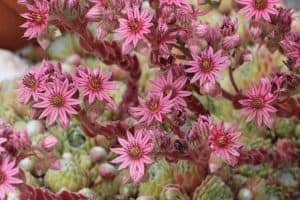
The sempervivum arachnoideum, or cobweb hen and chick, is a succulent plant that produces small, white flowers. The plant has a very faint fragrance that is only detectable when the leaves are crushed. The blooms are produced in the summer and last for about two weeks.
Growth rate
The Sempervivum arachnoideum, or Cobweb Hen and Chick, is a succulent that grows quickly. In just a few short weeks, this plant can grow from a single rosette to a full-sized plant.
When mature, the Cobweb Hen and Chick will produce offsets or chicks, that can be used to propagate new plants. This plant is easy to care for and makes an excellent addition to any succulent collection.
Toxicity
Sempervivum arachnoideum is considered non-toxic and safe around pets and humans.
USDA hardiness zones
Sempervivum arachnoideum grows best in USDA hardiness zones 3 to 8. The plant is low maintenance and does not require a lot of water or fertilizer. It can be grown outdoors or indoors, and when grown outdoors it should be planted on the north side of a wall to protect it from too much sun.
Pests and diseases
Sempervivum arachnoideum is a tough little plant that is relatively pest and disease free. However, it can be susceptible to mealybugs, aphids, and spider mites. If you see any of these pests on your plant, act quickly to remove them.
These pests can cause the leaves to turn yellow or brown and the plant to become stunted. You should also try not to over-water sempervivum arachnoideum as this will make it more prone to mold and other diseases.
